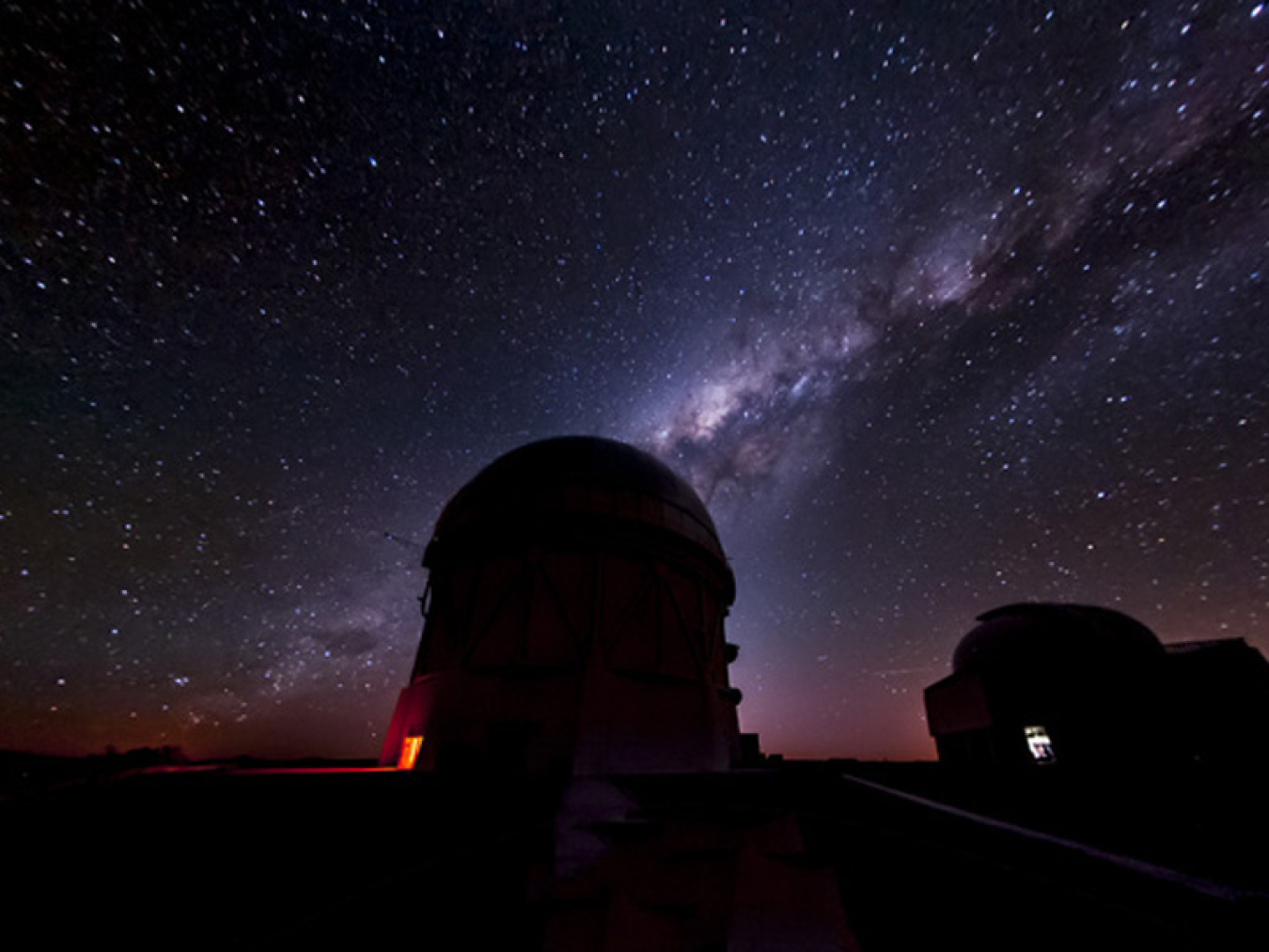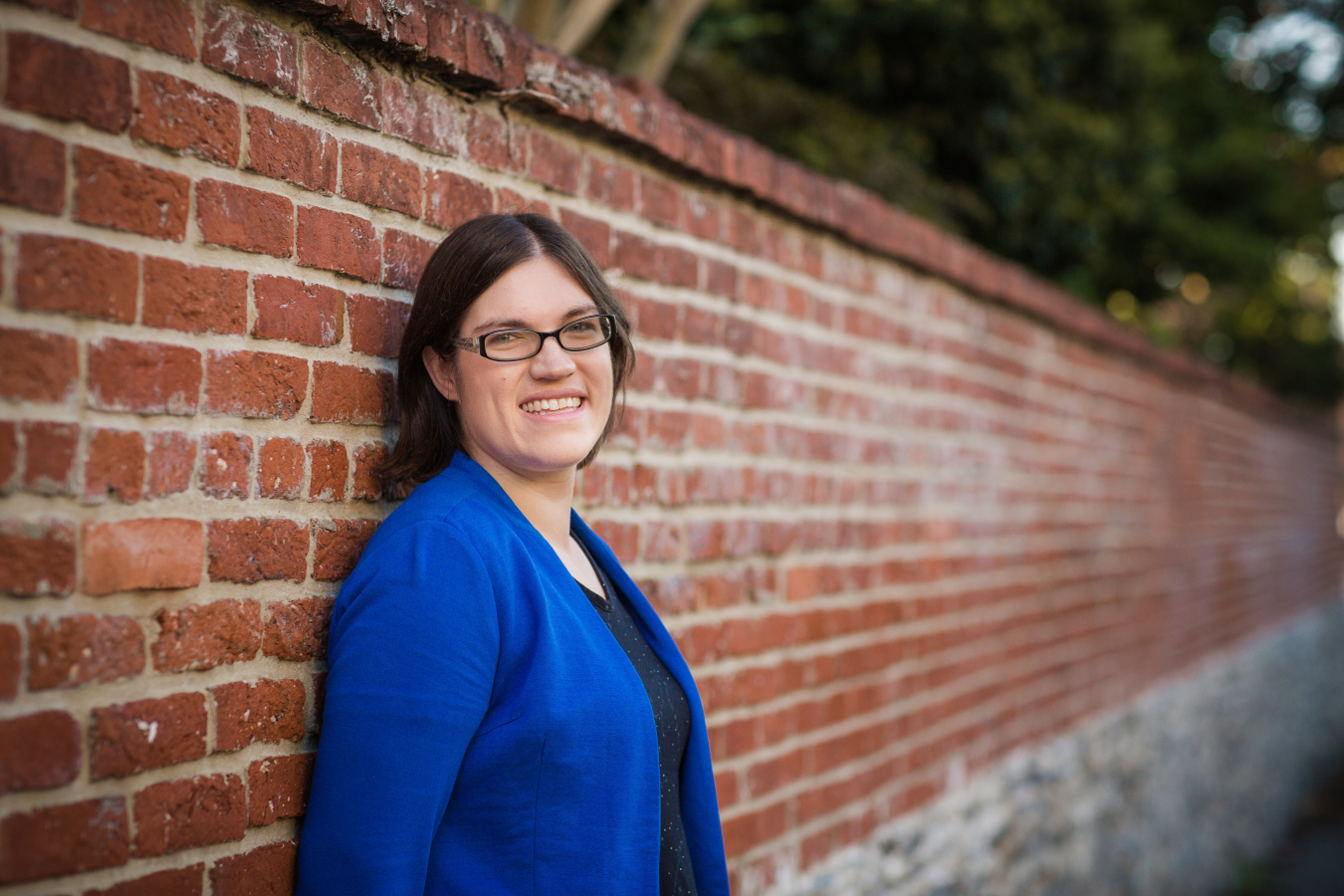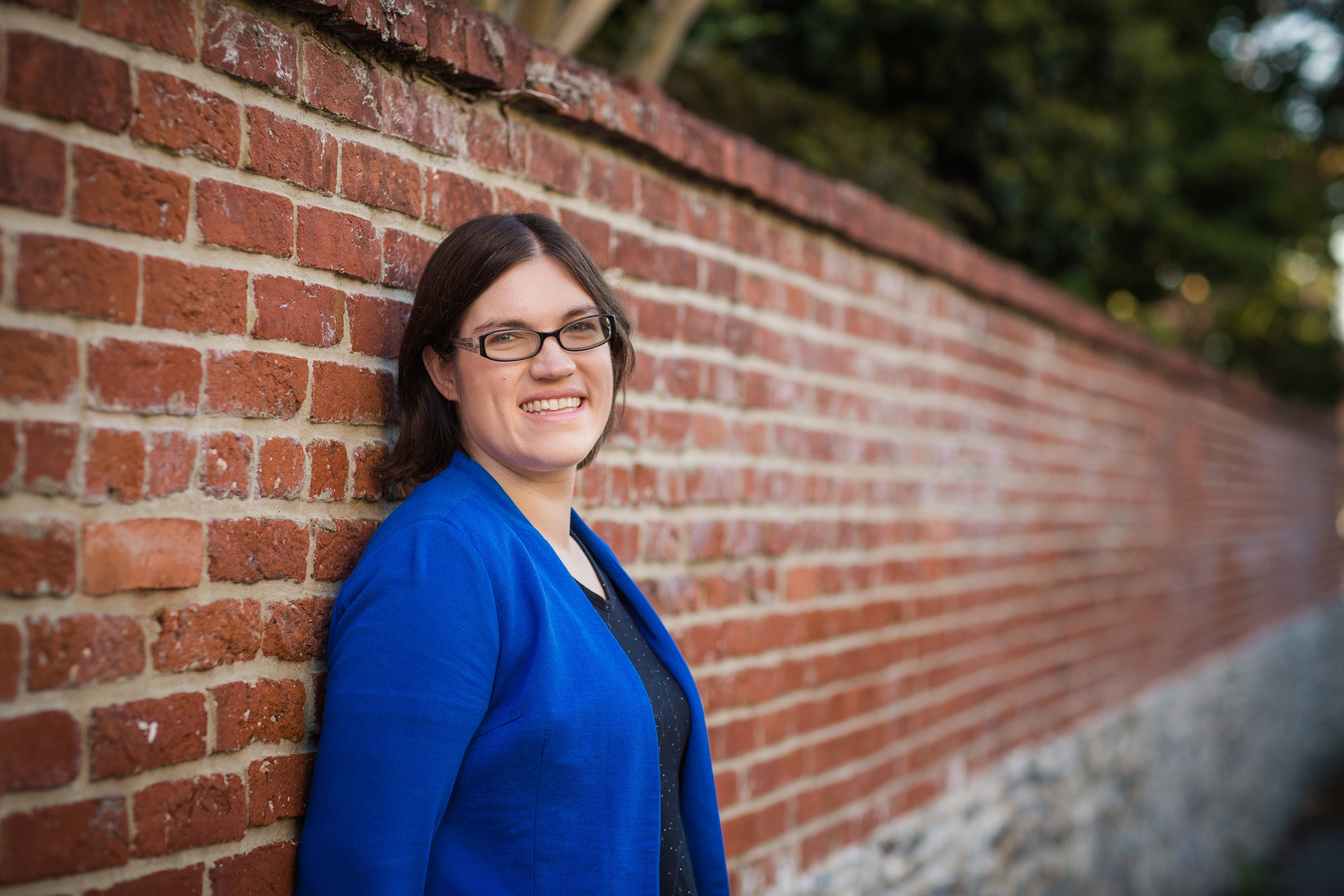Dark energy is causing the universe to expand ever faster; scientists are working to understand this mysterious phenomenon.
November 20, 2019
One of the biggest mysteries in science began with a dying star.
It wasn’t any particular dying star so much as the idea of one. In the 1980s, Saul Perlmutter at the Department of Energy’s (DOE) Lawrence Berkeley National Laboratory (LBNL) and his collaborators realized that they could use data about supernovae to research the history of the universe. Supernovae are extremely bright exploding stars that cast much of their mass out into space before they wink out.
Fortunately, Type Ia supernovae’s brightness is very consistent. Even when their actual brightness varies, it does so in a predictable way. By comparing measurements of how bright these supernovae appear in telescopes with their actual brightness, along with measurements of light from their home galaxies, scientists can figure out their age and distance from us. Using those, they can estimate how the universe has expanded over time.
Over the course of a decade, Perlmutter’s team collected enough data to look for a relationship between a supernova’s brightness and distance from Earth. They expected to see that very distant supernovae appear a bit brighter than they would in an expanding universe that wasn’t slowing in its growth.
The data revealed something else entirely.
The supernovae all looked dimmer than they should for their distance. At first, the scientists thought it was just a bizarre set of data. “When you see an amazing new result, your first thought isn’t ‘Eureka!’, it’s, ‘That’s an interesting looking graph,’” said Perlmutter. He and his team spent more than six months checking every aspect of the graph, looking for some aspect of the analysis that might be wrong.
It wasn’t.
In fact, it showed the opposite: The universe was expanding ever more quickly. The implication of this was dramatic. For the data to work with Einstein’s theory of general relativity – the foundation of astrophysics – 70 percent of the universe’s energy must be from some unknown source.
Something – a lot of something – was missing from our fundamental understanding of the universe.
As Perlmutter prepared for an upcoming conference, he made a series of changes to his plastic transparency slides to present the new results. “You are aware that it’s a very big, significant result, but that makes you even more careful,” he said. “By the time you say it in public, you have been working with it for so long that it doesn’t feel like a surprise to you.”
But for the audience, his 1998 talk made major waves. Not long after, a competing team presented the same result. In 2011, Perlmutter, Brian Schmidt, and Adam Riess received the Nobel Prize in physics for the discovery.
Because we don’t know what’s pushing the universe outward ever more quickly, “dark energy” is scientists’ shorthand for the mysterious process. To understand the history of our universe, researchers supported by the DOE Office of Science are collaborating with scientists around the globe to build elaborate 3D maps of space and time.
Considering the Possibilities
Whatever dark energy is, it’s weird. None of the possibilities fit scientists’ understanding of physics.
The first possibility is that it’s the “cosmological constant.” When Albert Einstein developed the equations describing general relativity, he assumed the universe was staying the same size. To counterbalance gravity pulling inward on the universe, he stuck in a variable, the cosmological constant, indicating something was pushing outward. When Edwin Hubble found that the universe was expanding, Einstein removed the constant. When they found there is a mysterious something pushing outward, scientists returned to Einstein’s idea. Unfortunately, the numbers from the experimental data are 10120 times smaller than the expectations for a cosmological constant in the equations.
There are two more possibilities. The second is that dark energy is an unknown form of energy that’s changed over time. The third possibility is that general relativity doesn’t explain what happens on the largest scales. Instead, it would be an approximation of an even more general theory. That would throw a wrench into one of our most successful pillars of astrophysics.
More than Just the Beginning of the Universe
Figuring out how the structure of the universe has changed over time can help scientists determine if dark energy is constant or not.
Scientists already know what the universe looked like in its early days, about 10 billion years ago. They’ve studied the cosmic microwave background, a set of faint heat signatures left over from that time. From examining this lingering radiation, scientists can work out the patterns of density and radiation way back then.
It’s figuring out what happened from 10 billion years ago onward that’s the hard part. Thankfully, scientists have something like time travel available when it comes to objects that are extremely far away. Because light takes time to arrive to Earth, extremely powerful telescopes are not looking at modern stars. Instead, scientists are seeing how those stars looked thousands, millions, and even billions of years ago, depending on how far away they are. Looking backwards at ever more distant stars allows them to create maps that are mapping length, width, and distance over time.
How to Measure the Universe
For a map of this sort, scientists need special tools based on the stars and galaxies themselves.
Type Ia supernovae are the first option. Using this method requires scientists take new supernovae measurements with much higher precision at a larger range of distances. “Almost all of the large gamut of theories fit the data and would not be distinguishable from each other except with very, very high precision measurements,” said Perlmutter.
Although DOE’s Office of Science is supporting several projects that can make these high-precision measurements, other techniques are necessary too. For something that’s so outside of the realm of known physics, scientists want multiple methods to compare results.
The next tool is analyzing the Baryon Acoustic Oscillation (BAO). Like the cosmic microwave background, the BAO is a remnant of the universe’s early days. Not long after the Big Bang, the plasma that made up everything expanded, creating waves of density and pressure. About 370,000 years later, the plasma cooled, “freezing” the pressure waves. The cresting waves left clumps of matter at their beginning and end. As the universe grew, those wave patterns stretched out.
Now, the patterns are imprinted on the distribution of all matter. By looking at how the cosmic microwave background’s patterns (which reflect the beginning of the universe) are different from the BAO’s patterns (which reflect the middle and current universe), scientists can map changes in the distribution of matter over time. “It is based on the fundamental physics from the beginning of the universe,” said Parker Fagrelius, an LBNL researcher.
If that wasn’t mind-bending enough, a different technique called weak gravitational lensing measures how massive objects distort the shape of galaxies. Galaxies are so big that they bend space, along with the light from other galaxies behind them. When a telescope on Earth takes a photo of the background galaxies, their shapes are stretched compared to their true forms. By measuring this tiny distortion in the shape of the background galaxies at different positions, scientists can figure out the mass of the foreground ones. This technique can also help them map the matter distribution, including both visible and dark matter. “It’s one of the cleanest ways to measure the mass,” said Maria Elidaiana da Silva Pereira, a researcher at Brandeis University who works on the Dark Energy Survey.
The last option is measuring the properties of galaxy clusters, or groups of galaxies. The biggest clusters reveal where the early universe was the densest. “They can tell us a lot about the growth and formation of structures in the universe,” said Antonella Palmese, a researcher at DOE’s Fermi National Accelerator Laboratory.
Not Your Average Digital Camera
Scientists also have their choice of options when it comes to taking data.
Imaging surveys are telescopes with giant digital cameras. They take large, sweeping photographs of the sky that include huge numbers of galaxies and supernovae. Scientists analyze the objects’ brightness and color, which gives them information about their distance and mass.
The Dark Energy Survey, which is supported by an international group that includes DOE’s Office of Science, is providing the most comprehensive set of imaging data available. These images come from a 520-megapixel camera; in comparison, point-and-shoot cameras are 16 to 20 megapixels. Mounted on a telescope in Chile, the Dark Energy Camera took photos of about a quarter of the southern sky for five years. By the time it finished taking data in January 2019, it had photos of more than 300 million galaxies, tens of thousands of galaxy clusters, and several thousand Type Ia supernovae. “There was nothing as powerful as the Dark Energy Survey in terms of number of galaxies and galaxy clusters,” said Palmese.
Looking at so many galaxies gave scientists an unprecedented look into weak gravitational lensing. The team made the most precise measurement of how matter is distributed in the universe so far. With those observations, they ran a model of a universe composed of dark energy and dark matter as if dark energy was constant over time (which it would be if it’s the cosmological constant) and if it wasn’t (some other force). If the results from the models using the Dark Energy Survey data and the results from the cosmic microwave background matched, it would have confirmed that the cosmological constant model works well. In other words, it would show that dark energy is a cosmological constant.
The results were close – but not quite the same. While the data leaned towards the constant, it wasn’t strong enough to say whether there is a real discrepancy between the amount of matter measured by the Dark Energy Survey versus the cosmic microwave background results. That could indicate some problems with the model itself.
The Next Big Thing
Unlike the digital cameras of imaging surveys, spectroscopic surveys have bundles of fiber optic cables, each of which collects light from a different galaxy. These bundles provide types of information on the visible and non-visible wavelengths of light that are different from what scientists can get from photographs. This information delivers precise details on an object’s distance and velocity. However, a spectroscopic survey can only take data on a fraction of the objects that an imaging survey can.
The Dark Energy Spectroscopic Instrument (DESI) is the next step forward. A spectroscopic instrument installed on the Mayall telescope in Arizona, DESI will start gathering data of the northern sky early next year. What makes DESI unique compared to past surveys is the sheer amount of data it can take. It will be able to collect data on the light spectrum from ultraviolet all the way to infrared on 5,000 galaxies simultaneously.
“It really opens up the cosmological timeline,” said Fagrelius, who has worked on the project for much of her career. “It’s really exciting.” DESI should give results for the BAO that are three times more accurate than all previous calculations combined as well in-depth data on lensing and galaxy clusters. Combining these results could give us the best insight yet into how dark energy has behaved over time.
With these tools as well as the Large Synoptic Survey Telescope – which is anticipated to launch in Chile in 2023 – scientists anticipate nailing down a precise description of dark energy.
But it’s likely that the investigation will raise more questions than it answers. After all, this investigation started because Perlmutter and his team were trying to figure out how much the universe’s expansion was slowing down. They never expected to find the opposite.
“What I’m excited about is what we’re not expecting to see,” said Fagrelius. “With this amount of data, we’re going to discover things that we didn’t know we were looking for.”
The Office of Science is the single largest supporter of basic research in the physical sciences in the United States and is working to address some of the most pressing challenges of our time. For more information, please visit the Office of Science website.
Shannon Brescher Shea

Shannon Brescher Shea (shannon.shea@science.doe.gov) is the social media manager and senior writer/editor in the Office of Science’s Office of Communications and Public Affairs. She writes and curates content for the Office of Science’s Twitter and LinkedIn accounts as well as contributes to the Department of Energy’s overall social media accounts. In addition, she writes and edits feature stories covering the Office of Science’s discovery research and manages the Science Public Outreach Community (SPOC). Previously, she was a communications specialist in the Vehicle Technologies Office in the Office of Energy Efficiency and Renewable Energy. She began at the Energy Department in 2008 as a Presidential Management Fellow. In her free time, she enjoys bicycling, gardening, writing, volunteering, and parenting two awesome kids.


